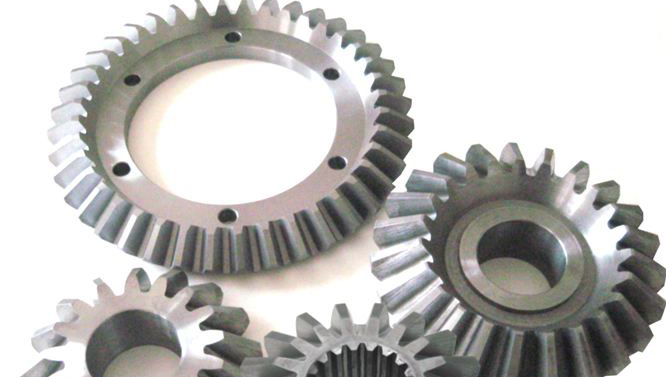The forging gear tells us the difference between the casting
Author: haloong Time: 2018-09-12 16:46:46
The forging gear is usually made by heating the steel to the austenite state, and then using the press machine to press the mold, the external forging pressure to make its shape parts. Casting defects such as segregation, shrinkage cavity and porosity exist. Taking gear forgings as an example, the flow linearity of metal is retained after steel forgings, which can significantly improve the mechanical performance of metal materials.
I. differences in mechanical properties. After the second processing of the forging, there will be a hardening process, which will lead to the compact arrangement, non-directional mechanical properties, better than the casting;
2. Different casting methods: the castings are poured into the model and cooled and formed after the mixture of raw materials is dissolved in the melting furnace. Forgings are made up of repeated restraints under pressure from the press.

A. Casting parts: composed of direct casting of molten steel, with poor grain size, slightly low metal density and poor mechanical stability;
Gear forgings: formed by high-temperature forging after casting, with fine grain, slightly higher density and stable mechanical properties.
B. Investigation from the non-processed appearance: the casting pieces are in the shape of small particles, and the gap can be seen. Free forging, after casting the appearance of black, slightly called sheet appearance, you can see the casting fold; Die forging, at first glance looks a bit similar to casting, but the appearance of the granule is still delicate. And die forging is often made small, large parts difficult to do.
C. Survey from the processing surface: there is a significant difference between cast iron and forging, cast iron has no luster (it will shine after grinding), chips are broken, and gray cast iron will have powder; Cast steel processing surface and forgings processing surface of their own thought is not very significant difference, have gloss.
The gear forgings have no shrinkage cavity and other forming defects, so the mechanical properties of forgings are better than castings. The advantage of casting is its ease of molding. The mechanical properties of fine scale are not high enough to be formed at one time. Mainly about the difference in molding methods.
It can be seen from the appearance that the surface of the castings is thicker and there are segregation and shrinkage holes, while the surface of the gear forgings is smooth and shiny. Because the gear forging is pressed by external force, while the casting part is solidification molding.

Overall, important gear blank needs to be forged. Forging by press machine can eliminate the defects of loose casting and optimize the microstructure of metal raw materials in the process of smelting. At the same time, the mechanical properties of forgings are generally better than that of unforged blank due to the preservation of complete metal streamlines. Die forging can also save material consumption and greatly improve material utilization.
The non - essential gear blank does not have to be forged.
A lot of gears are casting part. There are also many forged gears. The processing technology of the gear depends on the following performance of the gear:
1. Gear materials, some materials should not be cast or forged
2. Load (size) load stability (with or without impact) - gears with impact load should not be cast.

3. The size of the gear -- the pinion should not be cast. Especially: the gear is not possible to do very big, but the load is very big, and must be forged gear embryo, then refined.
4. The speed of the gears - high speed gears cannot be cast.
For low speed, steady load, large size can be made, after using precision casting gear, even can not be processed. Fine gear can only be machined.
So gear should be forged or cast according to specific product conditions.







